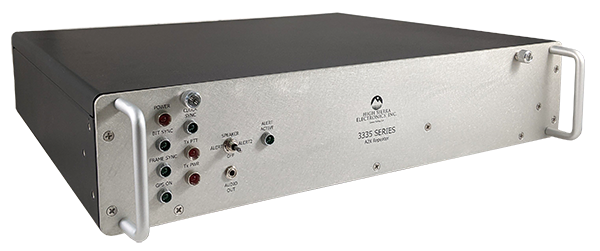High Sierra Electronics 333X Series of ALERT2 Repeater Concentrators is the latest generation of wireless communication technology for use in real-time hydrometeorological monitoring systems. Many configurations add concentrator capability which means that the unit will also receive ALERT data and retransmit it as concentrated ALERT as defined within the ALERT2* protocol.
The 333X Series of Repeaters Concentrators are offered in three different types of enclosure with a variety of options available in the different enclosures. The 3334 comes in an 8” diameter aluminum canister suitable for a standpipe installation. The 3335 models come in a 19” wide aluminum enclosure suitable for a standard equipment rack. While the 3335 has LED indicators on the front panel with all cable connections on the rear panel, the 3336 has all LED indicators and cable connections on the front panel which allows the 3336 to be mounted vertically in a cabinet or a communications shelter. The various model options are listed in the Ordering Guide.
One of the great advantages of the ALERT2 Protocol is the use of TDMA (Time Division Multiple Access). This allows a network design which assigns specific time slots for every gauge and repeater’s transmission. The result is virtually no data loss due to data collision which is a common occurrence in larger ALERT systems.
For existing ALERT Systems transitioning over time from ALERT to ALERT2, a Repeater will also need to operate as a Concentrator. This can be accomplished either through the inclusion of an internal ALERT Receiver/ Decoder, or the ALERT data can be imported via serial cable from an existing ALERT repeater if it is equipped with a serial output stream. If the ALERT receiver is internal the Repeater/Concentrator will be equipped with three radios; one to receive ALERT2, one to receive ALERT and a third for ALERT2 data retransmission. When the system design permits half duplex, then a single radio can receive and retransmit ALERT2 messages.
* ALERT2 is the latest generation data protocl for hydrologic systems administered by the ALERT2 Technical Working Group of the U.S. National Hydrologic Warning Council.




